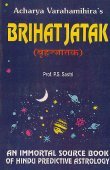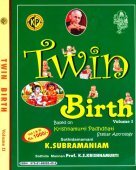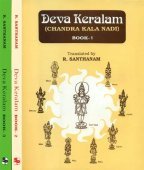Ashtaka, Aṣṭaka, Aṣṭakā: 23 definitions
Introduction:
Ashtaka means something in Hinduism, Sanskrit, the history of ancient India, Marathi. If you want to know the exact meaning, history, etymology or English translation of this term then check out the descriptions on this page. Add your comment or reference to a book if you want to contribute to this summary article.
The Sanskrit terms Aṣṭaka and Aṣṭakā can be transliterated into English as Astaka or Ashtaka, using the IAST transliteration scheme (?).
In Hinduism
Purana and Itihasa (epic history)
Source: Wisdom Library: Bhagavata PuranaAṣṭaka (अष्टक):—Son of Viśvāmitra (son of Gādhi). (see Bhāgavata Purāṇa 9.16.36)
Source: archive.org: Puranic Encyclopedia1) Aṣṭaka (अष्टक).—See under Āṣṭika. (See full article at Story of Aṣṭaka from the Puranic encyclopaedia by Vettam Mani)
2) Aṣṭaka (अष्टक).—A King of the Pūru dyansty. Genealogy. Descended in order from Viṣṇu as follows: Brahmā-Atri-Candra-Budha-Purūravas-Āyus-Nahuṣa-Yayāti-Pūru-Janamejaya-Prācinvā-Pravīra-Namasyu-Vītabhaya-Śuṇḍu-Bahuvidha-Saṃyāti-Rahovādi-Raudrāśva-Matināra-Santurodha-Duṣyanta-Bharata-Suhotra-Bṛhatputra-Ajamīḍha-Aṣṭaka. (This Aṣṭaka was the brother of Śunaśśepha).
3) Aṣṭaka (अष्टक).—A Rājarṣi born to Viśvāmitra of Mādhavī, wife of Yayāti. (Śloka 18, Chapter 119, Udyoga Parva, Mahābhārata). See under Gālava. How Aṣṭaka went to heaven. This story was told to the Pāṇḍavas by the sage Mārkaṇḍeya.
Source: Cologne Digital Sanskrit Dictionaries: The Purana Index1a) Aṣṭaka (अष्टक).—A śrāddha performed by Ikṣvāku, which led to the banishment of his son Vikukṣi (s.v.);1 a yugāḍi for sādharaṇa śrāddha;2 the eighth day after full moon on which Manes are worshipped; three are distinguished, in the month of caitra, of pauṣa and māgha;3 sacred to Kāvya pitṛs.4
- 1) Bhāgavata-purāṇa IX. 6. 6; Brahmāṇḍa-purāṇa III. 17. 2-7; 63. 11; Vāyu-purāṇa 88. 11-19.
- 2) Matsya-purāṇa 17. 2, 5.
- 3) Vāyu-purāṇa 81. 2;
- 4) Vāyu-purāṇa 56. 19.
1b) A son of Viśvāmitra by Dṛṣadvatī and a sage;1 father of Lauhi;2 originator of the jaḥnugaṇa.3
- 1) Bhāgavata-purāṇa IX. 16. 36; Brahmāṇḍa-purāṇa II. 32. 118; III. 66. 68-74; Viṣṇu-purāṇa IV. 7. 38; Vāyu-purāṇa 91. 96, 103.
- 2) Brahmāṇḍa-purāṇa III. 66. 75.
- 3) Vāyu-purāṇa 91. 103.
1c) A Rājaṛṣi who met Yayāti falling from Heaven and discoursed with him on several points: A grandson of Yayāti by his daughter; a Brahmiṣṭha, and Trayārṣeya with Viśvāmitra and Lohita; goes to Heaven with all his relations including Yayāti.*
- * Matsya-purāṇa 35. 5; Ib. Chapters 37-41; 42. 14 & 28.
1d) A brother of Vasudeva.*
- * Viṣṇu-purāṇa IV. 14. 30.
2) Aṣṭakā (अष्टका).—The name of Acchodā in Pitṛloka after she went from the earth. In her honour a river is named.*
- * Matsya-purāṇa 14. 19-20; 141. 17.

The Purana (पुराण, purāṇas) refers to Sanskrit literature preserving ancient India’s vast cultural history, including historical legends, religious ceremonies, various arts and sciences. The eighteen mahapuranas total over 400,000 shlokas (metrical couplets) and date to at least several centuries BCE.
Vyakarana (Sanskrit grammar)
Source: Wikisource: A dictionary of Sanskrit grammarAṣṭaka (अष्टक).—Another name for the famous work of Pāṇini popularly called the Aṣṭādhyāyī; cf. अष्टावध्यायाः परि-माणमस्य सूत्रस्य अष्टकं पाणिनीयम् । दशकं वैया-घ्रपदीयम् । त्रिंकं काशकृत्स्नम् । (aṣṭāvadhyāyāḥ pari-māṇamasya sūtrasya aṣṭakaṃ pāṇinīyam | daśakaṃ vaiyā-ghrapadīyam | triṃkaṃ kāśakṛtsnam |) Kāś on P.IV. 1.58; (2) students of Pāṇini's grammar, e. g. अष्टकाः पाणिनीयाः (aṣṭakāḥ pāṇinīyāḥ); cf. सूत्राच्च कोपधात् । (sūtrācca kopadhāt |) Kāś. on P.IV. 2. 65.

Vyakarana (व्याकरण, vyākaraṇa) refers to Sanskrit grammar and represents one of the six additional sciences (vedanga) to be studied along with the Vedas. Vyakarana concerns itself with the rules of Sanskrit grammar and linguistic analysis in order to establish the correct context of words and sentences.
Dharmashastra (religious law)
Source: Sacred Texts: The Grihya Sutras, Part 2 (SBE30)Aṣṭakā (अष्टका) refers to one of the seven Pākasaṃsthās or Pākayajñas (groups of seven sacrifices).—Hārīta says: “Let a man offer the Pākayajñas always, always also the Haviryajñas, and the Somayajñas (Soma sacrifices), according to rule, if he wishes for eternal merit”.—The object of these sacrifices [viz., Aṣṭakā] is eternal happiness, and hence they have to be performed during life at certain seasons, without any special occasion (nimitta), and without any special object (kāma). According to most authorities, however, they have to be performed during thirty years only. After that the Agnihotra only has to be kept up.
Source: Shodhganga: Vaikhanasa Grhyasutra Bhasya (Critical Edition and Study)Aṣṭaka (अष्टक) refers to the ritual of “offering of eight balls of rice mixed with sesamum seeds to the manes” and represents one of the various rituals mentioned in the Vaikhānasagṛhyasūtra (viz., vaikhānasa-gṛhya-sūtra) which belongs to the Taittirīya school of the Black Yajurveda (kṛṣṇayajurveda).—The original Gṛhyasūtra of Vaikhanāsa consists of eleven chapters or “praśnas”. Each praśna is subdivided into sub-divisions called “khaṇḍa”. But only the first seven chapters deal with actual Gṛhyasūtra section. Aṣṭaka is one of the seven pākayajñas.

Dharmashastra (धर्मशास्त्र, dharmaśāstra) contains the instructions (shastra) regarding religious conduct of livelihood (dharma), ceremonies, jurisprudence (study of law) and more. It is categorized as smriti, an important and authoritative selection of books dealing with the Hindu lifestyle.
Shaktism (Shakta philosophy)
Source: Google Books: ManthanabhairavatantramAṣṭaka (अष्टक) or Gṛhāṣṭaka refers to the “group of eight houses”, according to the Manthānabhairavatantra, a vast sprawling work that belongs to a corpus of Tantric texts concerned with the worship of the goddess Kubjikā.—Accordingly, “(The Śāmbhava yogi) has the authority (to perform the rites), knows the scripture and has a consort. [...] Intent on the practice of mantras, he wears ochre clothes. He wanders in search of alms amongst Brahmins and others in the group of eight Houses [i.e., gṛha-aṣṭaka] born of Kula. Craving the practice of accomplishments (siddhisādhana), he is the Āṇavayogin”.

Shakta (शाक्त, śākta) or Shaktism (śāktism) represents a tradition of Hinduism where the Goddess (Devi) is revered and worshipped. Shakta literature includes a range of scriptures, including various Agamas and Tantras, although its roots may be traced back to the Vedas.
Shaivism (Shaiva philosophy)
Source: Brill: Śaivism and the Tantric TraditionsAṣṭaka (अष्टक) refers to the “eight-fold (recitation)” (of mantras) , according to the 13th-century Matsyendrasaṃhitā: a Kubjikā-Tripurā oriented Tantric Yoga text of the Ṣaḍanvayaśāmbhava tradition from South India.—Accordingly, “After this, O Śivā, hear the exposition of the Kula Conduct. After he has joined the tradition of the Siddhas, he should worship his guru as divine. The Yogin who is engaged in the worship of his guru can obtain the highest Power. The guru’s bedstead, his bedding, clothes, ornaments, sandals, parasol, antilope-skin, bowl (pātra) or anything else: if he touches any of these with his feet, he should place them on his head and recite [mantras] eight times (aṣṭaka—dhṛtvāṣṭakaṃ japet). [...]”.

Shaiva (शैव, śaiva) or Shaivism (śaivism) represents a tradition of Hinduism worshiping Shiva as the supreme being. Closely related to Shaktism, Shaiva literature includes a range of scriptures, including Tantras, while the root of this tradition may be traced back to the ancient Vedas.
India history and geography
Source: Cologne Digital Sanskrit Dictionaries: Indian Epigraphical GlossaryAṣṭaka.—(EI 7), same as ba-di 8; worship of the manes with oblations to them. Cf. aṭṭagam (SII 13), division of land, and aṭṭagattār (SII 13), share-holders in a land. See dvādaśaka. Note: aṣṭaka is defined in the “Indian epigraphical glossary” as it can be found on ancient inscriptions commonly written in Sanskrit, Prakrit or Dravidian languages.

The history of India traces the identification of countries, villages, towns and other regions of India, as well as mythology, zoology, royal dynasties, rulers, tribes, local festivities and traditions and regional languages. Ancient India enjoyed religious freedom and encourages the path of Dharma, a concept common to Buddhism, Hinduism, and Jainism.
Languages of India and abroad
Marathi-English dictionary
Source: DDSA: The Molesworth Marathi and English Dictionaryaṣṭaka (अष्टक).—n (S) An aggregate of eight. 2 The eight sections collectively of Panini's grammar. 3 m A common term for the eight portions of a saṃhitā or collection of the formulæ of the Rig Veda.
--- OR ---
aṣṭaka (अष्टक).—a S Eight: also eighth.
Source: DDSA: The Aryabhusan school dictionary, Marathi-Englishaṣṭaka (अष्टक).—n An aggregate of eight. A com- mon term-(1) the eight sections collectively of Pânini's grammar. (2) the eight portions of a saṃhitā. (3) collection of the formulæ of the Rig Veda. a Eight, also eighth.
Marathi is an Indo-European language having over 70 million native speakers people in (predominantly) Maharashtra India. Marathi, like many other Indo-Aryan languages, evolved from early forms of Prakrit, which itself is a subset of Sanskrit, one of the most ancient languages of the world.
Sanskrit dictionary
Source: DDSA: The practical Sanskrit-English dictionaryAṣṭaka (अष्टक).—a. [aṣṭa parimāṇamasya kan] Consisting of 8 parts eight-fold; क्रोधजोऽपि गणोऽष्टकः (krodhajo'pi gaṇo'ṣṭakaḥ) Manusmṛti 7.48.
-kaḥ 1 [aṣṭakaṃ (pāṇineḥ), vidanti adhīyate vā ityaṣṭakāḥ sūtrācca kopadhāt P.IV.2.65. Sk.] One who studies or is acquainted with the eight Adhyāyās of Pāṇini's grammar.
2) Name of a son of Viśvāmitra (author of the hymn Ṛgveda 1.14.)
-kā [aśnanti pitaro'syāṃ tithau aś-takan Uṇādi-sūtra 3.148]
1) A collection of three days (7th, 8th, and 9th) beginning from the seventh day after the full moon.
2) the 8th day of three months on which the Manes are to bo propitiated.
3) A Śrāddha to be performed on the above days; worship of the Manes on certein days; तस्य व्रातस्य योऽस्य द्वितीयोऽ- पानः साष्टका (tasya vrātasya yo'sya dvitīyo'- pānaḥ sāṣṭakā) Av.15.16.2; अष्टकापितृदैवत्यमित्ययं प्रसृतो जनः (aṣṭakāpitṛdaivatyamityayaṃ prasṛto janaḥ) Rām.2.18.14.
4) The 8th day of a month; Manusmṛti 4.113-4.
-kam 1 A whole consisting of 8 parts.
2) The 8 chapters of Pāṇinī's Sūtras; (aṣṭāvadhyāyāḥ parimāṇamasya ityaṣṭakam; pāṇineḥ sūtram Sk.).
3) The study of the Sūtras.
4) A division of the Ṛgveda (it being divided into 8 Aṣṭakas or 1 Ma- ṇḍalas).
5) Any group of eight; as वानराष्टकम्, तारा- ष्टकम्, मङ्गलाष्टकम् (vānarāṣṭakam, tārā- ṣṭakam, maṅgalāṣṭakam) &c. गङ्गाष्टकं पठति यः प्रयतः प्रभाते वाल्मीकिना विरचितं शुभदं मनुष्यः (gaṅgāṣṭakaṃ paṭhati yaḥ prayataḥ prabhāte vālmīkinā viracitaṃ śubhadaṃ manuṣyaḥ)
6) The number eight.
--- OR ---
Astaka (अस्तक).—Final beatitude, absolution (mokṣa).
-kam Ved. Home. आ पत्नीरिदमस्तकम् (ā patnīridamastakam) Av.2.26.5. also cf. उदये सविता रक्तो रक्तश्चास्तमने तथा (udaye savitā rakto raktaścāstamane tathā) | Subhās.
Derivable forms: astakaḥ (अस्तकः).
Source: Cologne Digital Sanskrit Dictionaries: Edgerton Buddhist Hybrid Sanskrit DictionaryAṣṭaka (अष्टक).—(= Pali Aṭṭhaka), name of a king: Mahāvastu iii.375.7 (verse); he is otherwise in Mahāvastu always called Aṣṭamaka, q.v.
Source: Cologne Digital Sanskrit Dictionaries: Shabda-Sagara Sanskrit-English DictionaryAṣṭaka (अष्टक).—mfn.
(-kaḥ-kā-kaṃ) 1. Eight. 2. Eighth. n.
(-kaṃ) The eight sections of Panini'S Grammar. m.
(-kaḥ) 1. The formulæ of the Rig Veda as collected into eight portions, thence called Ashtakas. 2. One acquainted with Pamini'S rules or the formulæ of the Veda. E. kan added to aṣṭa.
--- OR ---
Aṣṭakā (अष्टका).—f.
(-kā) 1. Worship of the manes or progenitors performed on certain days. 2. The eighth day of three months on which the progenitors are worshipped. E. (aśa) to ear, and takan affix; vegetables, flesh, and cake, being severally offered upon these occasions, and the Brahmins feasted; in this sense it is also aṣṭikā.
--- OR ---
Astaka (अस्तक).—m.
(-kaḥ) Beautitude, eternal felicity. E. astam disappearance, and kan aff.
Source: Cologne Digital Sanskrit Dictionaries: Benfey Sanskrit-English DictionaryAṣṭaka (अष्टक).—i. e. aṣṭan + ka. I. adj. Eight-fold, [Mānavadharmaśāstra] 7, 48. Ii. f. kā. 1. The eighth day after the full moon, [Mānavadharmaśāstra] 4, 113; especially those on which the Pitṛs or Manes are worshipped. 2. Worship of the Pitṛs, [Rāmāyaṇa] 2, 108, 14. Iii. n. An octad, a collection of eight things.
Source: Cologne Digital Sanskrit Dictionaries: Cappeller Sanskrit-English DictionaryAṣṭaka (अष्टक).—[adjective] eightfold; [masculine] a man’s name; [feminine] ā the eighth day after full moon.
Source: Cologne Digital Sanskrit Dictionaries: Aufrecht Catalogus Catalogorum1) Aṣṭaka (अष्टक) as mentioned in Aufrecht’s Catalogus Catalogorum:—brāhmaṇa. This odd name signifies the Taittirīyasaṃhitā. Oppert. Ii, 565. 2310. 2685. 5676. 6022. 7316. 8244. 8457. 8564. 8809.
—[commentary] by Bhaṭṭa Bhāskara. Oppert. Ii, 503. 8556.
—[commentary] by Sāyaṇa. Oppert. Ii, 504. 8810.
2) Aṣṭaka (अष्टक):—read 8242 for 8244.
3) Aṣṭakā (अष्टका):—aṣṭakāḥ (?) 16 in number, poetry. Ak 460.
Source: Cologne Digital Sanskrit Dictionaries: Monier-Williams Sanskrit-English Dictionary1) Aṣṭaka (अष्टक):—[from aṣṭan] mf(ā or ikā)n. ([Śulba-sūtra]; cf. [Pāṇini 7-3, 45] [commentator or commentary]) consisting of eight parts, [Śatapatha-brāhmaṇa; Ṛgveda-prātiśākhya] etc.
2) [v.s. ...] one who is acquainted with the eight books of Pāṇini’s grammar, [Pāṇini 4-2, 65 [Scholiast or Commentator]]
3) [v.s. ...] m. Name of a son of Viśvāmitra (author of the hymn, [Ṛg-veda x, 104]), [Aitareya-brāhmaṇa; Āśvalāyana-śrauta-sūtra; Mahābhārata] etc.
4) Aṣṭakā (अष्टका):—[from aṣṭaka > aṣṭan] f. the eighth day after full moon (especially that in the months Hemanta and Śiśira, on which the progenitors or manes are worshipped, [Āśvalāyana-gṛhya-sūtra; Manu-smṛti] etc.; aṣṭakā is therefore also a Name of the worship itself or the oblations offered on those days, [Kauśika-sūtra] etc.), [Atharva-veda xv, 16, 2; Śatapatha-brāhmaṇa] etc.
5) [v.s. ...] a Name of the Acchodā river, [Matsya-purāṇa]
6) Aṣṭaka (अष्टक):—[from aṣṭan] n. a whole consisting of eight parts (as each of the eight Aṣṭakas of the [Ṛg-veda], or as, [Taittirīya-saṃhitā i], or as Pāṇini’s grammar etc.)
7) Astaka (अस्तक):—[from asta] n. home, [Atharva-veda ii, 26, 5] (cf. sv-astaka)
8) [v.s. ...] m. going to one’s eternal home, [cf. Lexicographers, esp. such as amarasiṃha, halāyudha, hemacandra, etc.]
9) Āṣṭaka (आष्टक):—n. Name of a district, [Patañjali on Kātyāyana] Vart. 31 on [Pāṇini 4-2, 104.]
Source: Cologne Digital Sanskrit Dictionaries: Yates Sanskrit-English Dictionary1) Aṣṭaka (अष्टक):—[(kaḥ-kā-kaṃ) a.] Eighth.
2) Aṣṭakā (अष्टका):—(kā) 1. f. Worship of the manes on the 8th day of every three months.
3) Astaka (अस्तक):—(kaḥ) m. Beatitude.
Source: DDSA: Paia-sadda-mahannavo; a comprehensive Prakrit Hindi dictionary (S)Aṣṭaka (अष्टक) in the Sanskrit language is related to the Prakrit word: Aṭṭhaya.
[Sanskrit to German]
Sanskrit, also spelled संस्कृतम् (saṃskṛtam), is an ancient language of India commonly seen as the grandmother of the Indo-European language family (even English!). Closely allied with Prakrit and Pali, Sanskrit is more exhaustive in both grammar and terms and has the most extensive collection of literature in the world, greatly surpassing its sister-languages Greek and Latin.
Kannada-English dictionary
Source: Alar: Kannada-English corpusAṣṭaka (ಅಷ್ಟಕ):—
1) [noun] a set, group or series of eight related things; an octad.
2) [noun] that which has eight parts.
3) [noun] the eight chapters of Pāṇini’s work on Saṃskřta grammar.
4) [noun] a poetical work consisting of eight stanzas.
5) [noun] any of the eight divisions of Řgvēda.
6) [noun] an octant a) an eighth of a circle; 45° angle or arc; b) a sector of a circle; c) a division of space or of a solid figure or body divided into eight by three planes, usu. at right angles.
7) [noun] a southern constellation containing the celestial pole; Octans.
Kannada is a Dravidian language (as opposed to the Indo-European language family) mainly spoken in the southwestern region of India.
See also (Relevant definitions)
Starts with (+23): Ashtakagrama, Ashtakakarman, Ashtakakarmapaddhati, Ashtakala, Ashtakalasevanirupana, Ashtakalasmarani, Ashtakalasya, Ashtakalinavarnana, Ashtakaliyalila, Ashtakaliyaseva, Ashtakam, Ashtakamala, Ashtakanga, Ashtakaniyama, Ashtakanvashtakashraddhaprayoga, Ashtakanya, Ashtakapala, Ashtakapalam, Ashtakapalya, Ashtakapati.
Ends with (+306): Abhilashashtaka, Abhinnaparikarmashtaka, Acyutashtaka, Adikeshavashtaka, Advaitashtaka, Advaitavicitrashtaka, Aishvary-ashtaka, Ambashtaka, Amritashtaka, Anashtaka, Angadharashtaka, Angavidyashtaka, Annapurnashtaka, Anvashtaka, Arcaratnashtaka, Ardhanarishvarashtaka, Ardhanaryashtaka, Ashashtaka, Ashtabhujashtaka, Ashtashtaka.
Full-text (+414): Ashtakya, Anvashtaka, Lauhi, Tryashtaka, Pitridaivatya, Ashtakika, Ashtakashraddha, Ashtakanga, Ashtakam, Caturashtaka, Pitridaivata, Shadashtaka, Gandhashtaka, Aishvary-ashtaka, Pakayajna, Svastaka, Mangala-astakaya, Ashtakin, Gapashtaka, Anvashtakya.
Relevant text
Search found 59 books and stories containing Ashtaka, Aṣṭaka, Aṣṭakā, Astaka, Āṣṭaka, Aṣtaka; (plurals include: Ashtakas, Aṣṭakas, Aṣṭakās, Astakas, Āṣṭakas, Aṣtakas). You can also click to the full overview containing English textual excerpts. Below are direct links for the most relevant articles:
The Brahmanda Purana (by G.V. Tagare)
Chapter 17 - Appropriate Tithis for performing Śrāddha < [Section 3 - Upodghāta-pāda]
Chapter 66 - Description of Amāvasu dynasty (vaṃśa) < [Section 3 - Upodghāta-pāda]
Chapter 63 - The Ikṣvāku dynasty (vaṃśa) < [Section 3 - Upodghāta-pāda]
Manusmriti with the Commentary of Medhatithi (by Ganganatha Jha)
Verse 4.150 < [Section XIV - Other Duties]
Verse 1.2 < [Section I - Question of the Sages]
Verse 4.119 < [Section XIII - Days unfit for Study]
Paraskara-grihya-sutra (by Hermann Oldenberg)
Gobhila-grihya-sutra (by Hermann Oldenberg)
Asvalayana-grihya-sutra (by Hermann Oldenberg)
Garga Samhita (English) (by Danavir Goswami)
Verse 1.2.13 < [Chapter 2 - Description of the Abode of Śrī Goloka]
Verse 2.2.30 < [Chapter 2 - Description of Girirāja Govardhana’s Birth]
Related products



